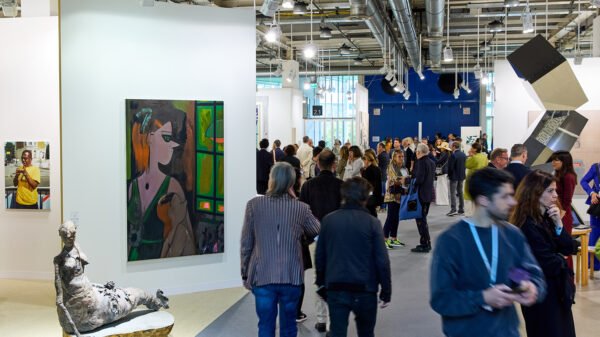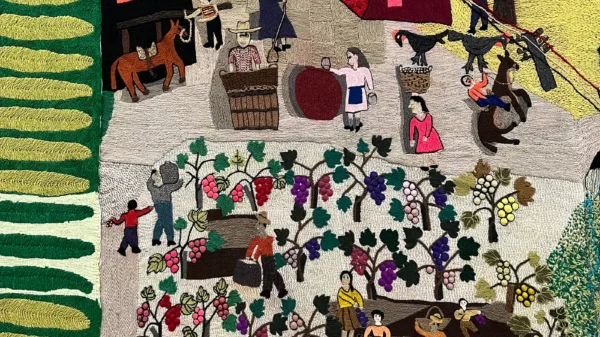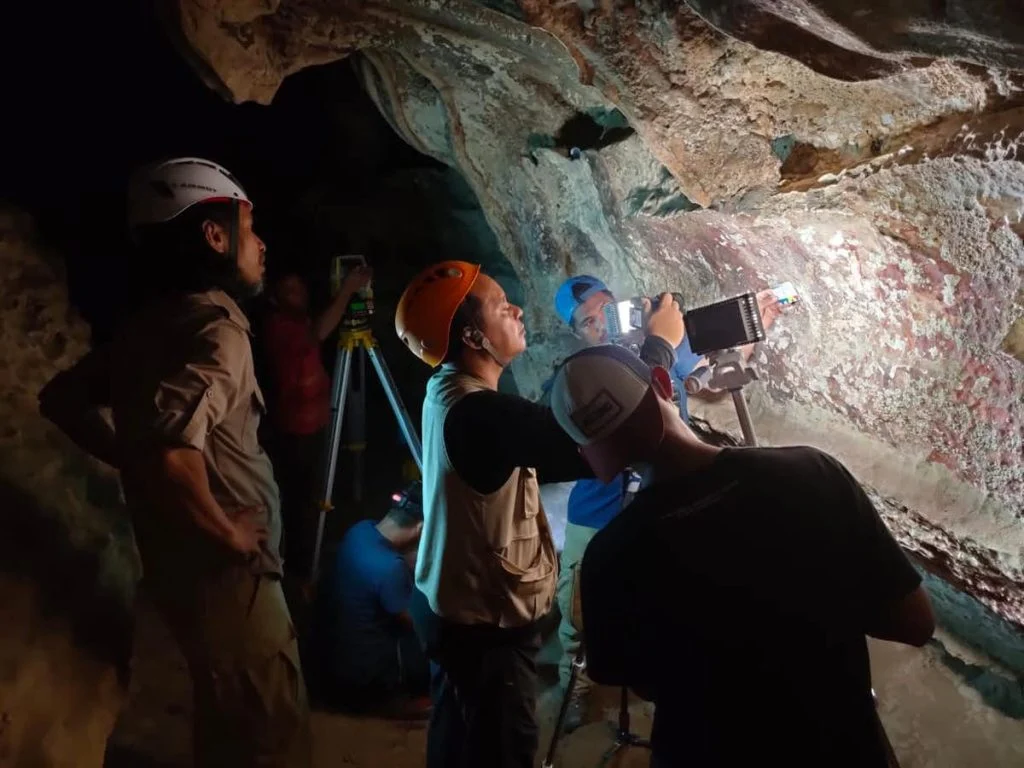The Discovery of the Ancient Painting
In the dense, verdant region of Maros Pangkep in South Sulawesi, Indonesia, lies the limestone cave of Leang Karampuang, a site of immense archaeological significance. The discovery of an ancient painting within this cave has captivated the attention of historians and archaeologists worldwide, shedding light on the earliest forms of narrative art known to humanity.
Reaching the painting requires a formidable journey. Intrepid explorers must first ascend a rugged, rocky cliff face, a challenge that deters many. The path then narrows to a barely visible opening, demanding careful maneuvering. Inside, the air grows cooler as one navigates through a snaking passage, the walls closing in with each step, until finally, the chamber housing the ancient artwork is revealed.
This secluded cave’s location, in a region rich with archaeological sites, underscores its importance. The Maros Pangkep region is renowned for its prehistoric rock art, contributing significantly to our understanding of early human civilization in Southeast Asia. Within the cavernous walls of Leang Karampuang, the painting depicts three humanlike figures engaged in an apparent interaction with a wild pig, an evocative scene that offers a glimpse into the lives and imaginations of our distant ancestors.
Dating this extraordinary artwork involved meticulous scientific techniques. Researchers employed uranium-series dating on the calcite deposits overlaying the painting, a method that revealed the artwork to be over 43,900 years old. This discovery has profound implications, as it establishes the Leang Karampuang painting as the world’s oldest known example of storytelling through art, predating other significant prehistoric artworks.
The narrative scene, with its intricate depiction of human and animal figures, indicates a sophisticated level of cognitive and artistic development among the early inhabitants of Sulawesi. This ancient masterpiece not only enriches our understanding of prehistoric art but also provides invaluable insights into the cultural and spiritual lives of early human societies.
Interpreting the Ancient Scene: Human-Animal Interaction
The painting found in Leang Karampuang cave, depicting three humanlike figures interacting with a wild pig, offers a profound glimpse into early human culture and storytelling. This ancient artwork is not merely a representation of a hunting scene but a complex narrative that reveals much about the symbolic and ritualistic practices of prehistoric societies. The anthropomorphic features of the figures, which combine human and animal traits, suggest a deep connection between humans and the natural world, possibly indicating a belief in the spiritual significance of animals or a ritualistic interpretation of the hunt.
Anthropological analysis of the scene highlights the importance of storytelling in early human communities. The depiction of the figures engaged in a coordinated effort to hunt the pig suggests a communal activity that required communication and cooperation. This narrative art form serves as an early example of how humans used imagery to convey stories, preserve cultural knowledge, and strengthen social bonds. The placement of the figures and the dynamic interaction with the animal indicate a sophisticated understanding of composition and movement, emphasizing the artistic skills and narrative capabilities of the prehistoric artists.
When compared to other ancient artworks, such as the cave paintings in Lascaux, France, or the rock art of the San people in Southern Africa, the Leang Karampuang painting stands out for its unique portrayal of human-animal interaction. While many prehistoric artworks focus on the animals themselves, often in isolation, this painting integrates human figures in a narrative context, shedding light on the evolving complexity of human expression and communication. This suggests that the roots of human creativity and the ability to tell stories through visual art are much deeper than previously understood.
The discovery of the Leang Karampuang painting has broad implications for our understanding of the origins of human creativity and communication. It challenges previous notions about the timeline of artistic development and highlights the role of narrative art in the early human experience. This ancient scene not only enriches our knowledge of prehistoric life but also underscores the enduring power of storytelling as a fundamental aspect of human culture.



































